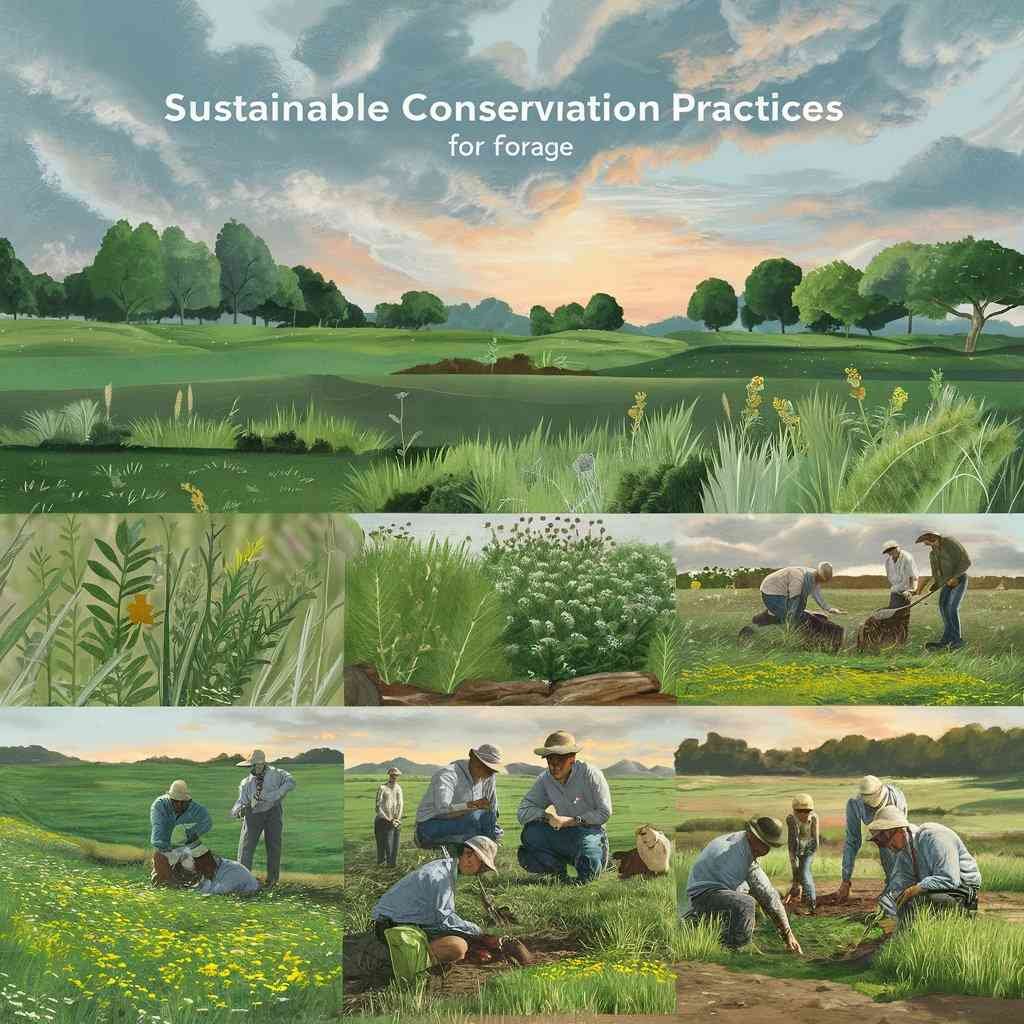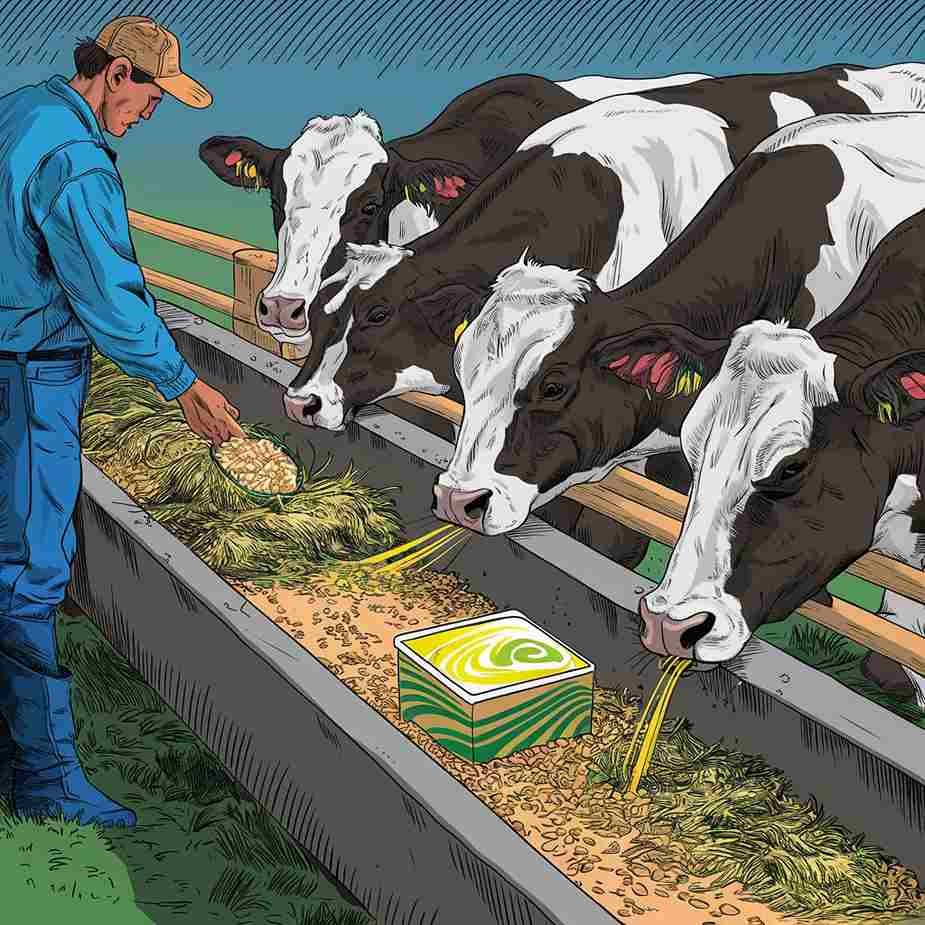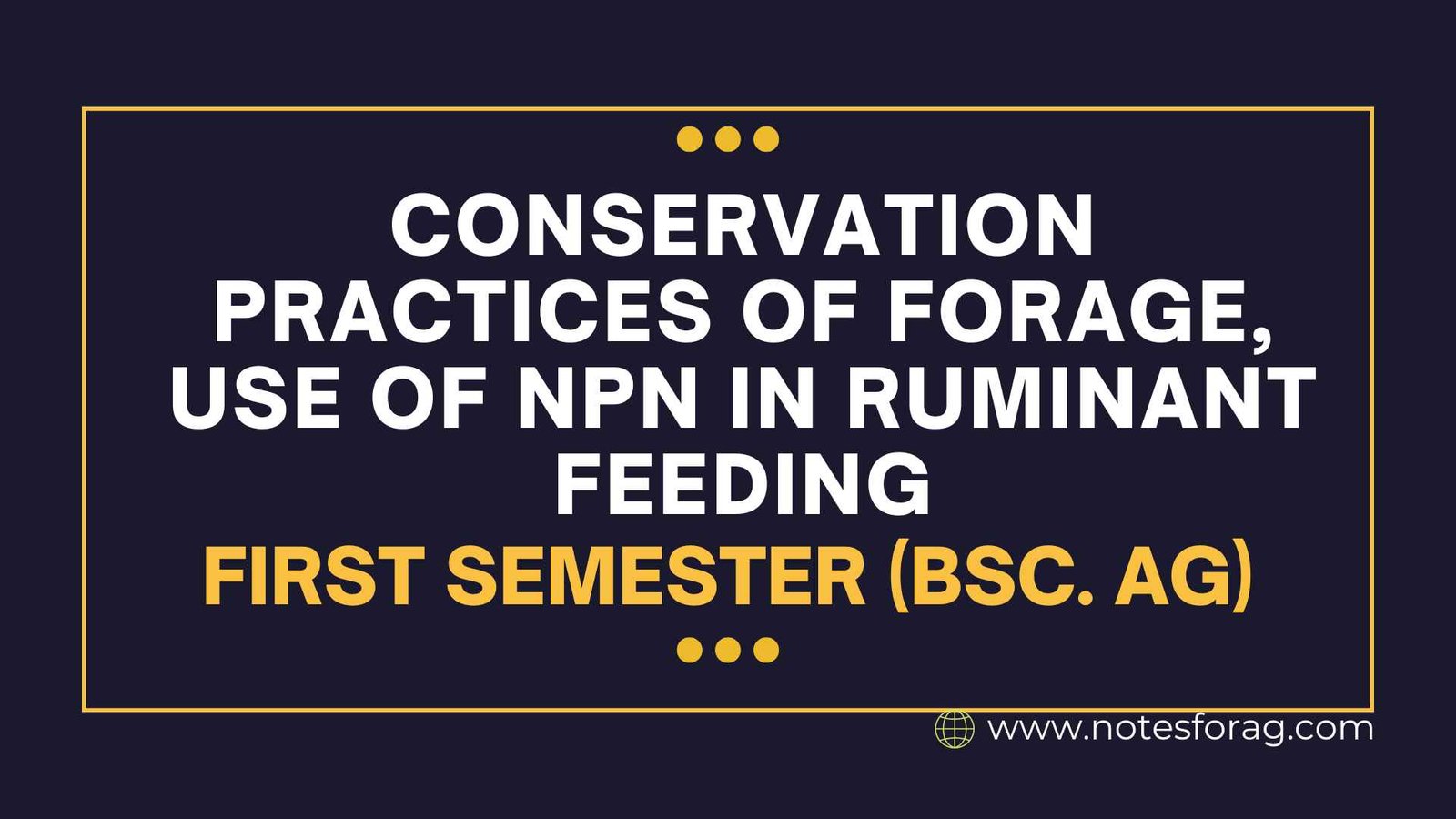Forage conservation practices include techniques such as baling, silage production, and haymaking to retain nutrients for feed. Forage is chopped and dried to lower its moisture content in haymaking, whereas silage is made by fermenting the chopped forage in an anaerobic environment. For storage purposes, baling compacts dry hay into bales. Furthermore, Non-Protein Nitrogen (NPN) is fed to ruminants in addition to protein sources in their diet.
Table of Contents
Introduction to Forage Conservation and NPN
Forage conservation is an essential livestock management method that guarantees a steady and high-quality feed supply all year long, especially in seasons when fresh forage is in short supply. Preserving the forage’s nutritional value, which is essential for ruminant health and productivity, is the major objective of forage conservation. Methods like haylage generation, silage making, and hay production are frequently used to accomplish this. With the added benefit of preserving the vital nutrients in the forage, these techniques assist extend its shelf life and offer a consistent feed source when pasture availability is low.

Non-protein nitrogen, or NPN, is being used more and more in ruminant nutrition in addition to conserving fodder. NPN compounds provide as substitute nitrogen sources that the rumen’s microbial population can use. Examples of these compounds are urea and ammonium salts. NPN can be transformed by these microbes into microbial protein, which ruminants can subsequently absorb and digest. By improving the efficiency of protein use, this technique permits the addition of conventional protein sources such as fish meal and soybean meal.
Creating efficient feeding strategies requires an understanding of how forage conservation practices and the strategic application of NPN interact. The integration of these methods guarantees that ruminants receive balanced and nutrient-rich diets, which eventually contributes to the overall efficiency of livestock production systems as livestock producers continue to look for sustainable and financially feasible solutions.
Methods of Forage Conservation
The year-round availability and nutritional quality of feed for ruminants depend on forage conservation. There are three main techniques used: silage, haylage, and haymaking. Every approach has its own set of pros and limitations, ideal settings, and particular processes. Some of the conservation practices of forage are explained below:
- Haymaking: Reducing moisture content and preserving nutrients by cutting and drying fodder.
- Silage Making: To make silage, chopped fodder is fermented in anaerobic conditions.
- Haylage Production: This process is comparable to silage production but uses more moisture than hay.
- Baling: Creating compacted hay for storage and transportation by compressing it into bales.
- Ensiling: Fermenting and preserving fodder by storing it in pits or silos.
Utilization of Non-Protein Nitrogen in Ruminant Diets

- Ammonia Sources: These include anhydrous ammonia, urea, and ammonium salts.
- Microbial Utilization: NPN is transformed into microbial protein by rumen microorganisms.
- Balancing Rations: Increasing NPN sources to make ruminant diets’ protein level more balanced.
- Cost-Effectiveness: Compared to conventional protein sources, NPN supplements are frequently more affordable.
- Supplemental Feeding: Added to other protein sources to help ruminants reach their protein needs.
- Caution: As excessive NPN intake can be hazardous to ruminants, proper management is essential.
Integrating Forage Conservation and NPN for Optimal Ruminant Nutrition
Ruminant nutrition can be greatly improved, supporting health and production, by implementing efficient forage conservation practices and making strategic use of non-protein nitrogen (NPN). By reducing the effects of seasonal fluctuations, forage conservation practices like haymaking and silage production guarantee a consistent supply of high-quality feed all year round. Farmers can optimize the diet’s protein level by integrating NPN supplements, which will help the rumen’s microbial protein synthesis function more efficiently.
Farmers should place a strong priority on superior forage conservation practices in order to attain this synergy. For example, ensiling permits new forage to be preserved under anaerobic circumstances while retaining its nutritional content. Similar to this, properly prepared hay keeps the vital nutrients in the feed. Next, NPN sources such as urea or ammonium salts can be added to these preserved forages, offering a low-cost way to increase the amount of crude protein in the diet.
Adopting these conservation practices requires careful observation of the health and behavior of the animals. Farmers may improve their feeding regimens by using the insightful input that comes from routine evaluations of growth rates, milk production, and body condition scores. Creating an ideal feeding schedule that takes into account the requirements of the animals and the unique farm conditions can also be facilitated by working with a veterinarian or nutritionist.
Farmers may guarantee a well-rounded and nourishing diet for their ruminants, resulting in increased production and sustainability in their agricultural operations, by carefully combining NPN supplementation with forage conservation practices.
Frequently Asked Question(FAQ)
What are conservation practices of forage?
Forage conservation techniques include haymaking, silage production, and baling in order to retain nutrients for feed.
What is the use of NPN in ruminant feeding?
In ruminant diets, Non-Protein Nitrogen (NPN) is added as a protein supplement, such as urea, to improve microbial protein synthesis in the rumen.
Related Articles

